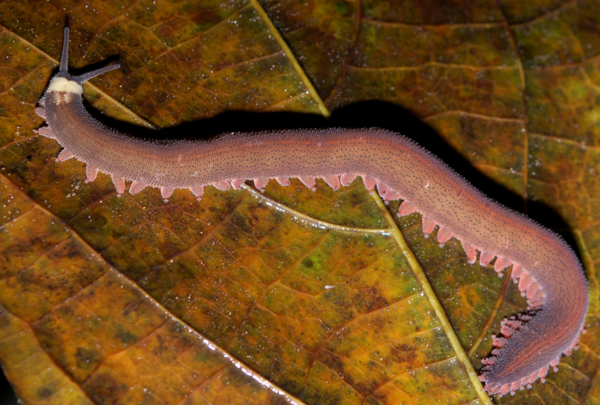Our Terms & Conditions | Our Privacy Policy
Student discovers 500-million-year-old ‘Living Fossil’ on science expedition– here’s what it is
Sometimes, the most extraordinary discoveries occur when one is not even looking for them, and nature surprises us by quietly hiding secrets in the most unexpected corners of the world. It reminds us that there’s still so much we don’t know about the Earth we live on. And occasionally, someone stumbles upon something that alters our perspective on the past and our vision of the future of life on our planet.That’s exactly what happened in South Africa’s dry and rugged Karoo region, where it is unexpected to find something ancient, soft-bodied, and hidden. What started as a simple exploration by a university student ended up becoming a major scientific discovery of a completely new species of velvet worm.In March 2022, Stellenbosch University student Rohan Barnard went on a routine exploration in the Swartberg Mountains, situated between Calitzdorp and Oudtshoorn. While turning over rocks in search of ants and reptiles, he stumbled upon a slate-black velvet worm that was lying beneath damp sand and leaf litter near a small river.Recognising how rare the creature was, Barnard documented it on the biodiversity observation app iNaturalist. This specimen was later identified as a new species, Peripatopsis barnardi, named in his honour.
Living fossils from the Cambrian period
Velvet worms, belonging to the phylum Onychophora, are often referred to as “living fossils.” Their lineage dates back over 500 million years to the Cambrian period. With soft bodies and non-jointed legs, they have remained largely unchanged over time. The discovery of P. barnardi in the Karoo region suggests that this area was once more temperate and forested, providing a suitable habitat for such ancient species.
The discovery tells about the ancient climate history of the region
The presence of P. barnardi in the Karoo indicates that the region’s current arid conditions are relatively recent. According to Prof. Savel Daniels, an evolutionary biologist from Stellenbosch University, the Cape Fold Mountains, where the species was found, were once part of a more temperate and sub-tropical environment during the early Miocene period. Over time, climatic shifts and tectonic events led to the area’s current dry state, isolating species like the velvet worm and driving their evolution into distinct forms.
The role of citizen science in biodiversity discovery
By documenting and sharing observations, individuals can play a pivotal role in identifying new species and understanding ecological patterns. Prof. Daniels tells about the importance of such efforts, noting that many of South Africa’s velvet worm species have been found through citizen science initiatives.
Why are velvet worms so special?
Velvet worms are one of those rare creatures that feel like they’ve stepped straight out of prehistory. Much like the famously tough water bears or Tardigrades, velvet worms belong to their evolutionary group, which is a completely separate branch of life. Scientists believe they evolved from an ancient marine ancestor, possibly something like the weird, spiky Hallucigenia.But something which makes them special is that they haven’t changed in over 500 million years. Fossil records show that these animals have looked pretty much the same since the Cambrian period, long before dinosaurs even existed. That’s why they’re often called “living fossils.” Today, velvet worms are land-dwellers, but they’re extremely picky about where they live. One can only find them in cool, damp places, like the kind of environments that used to exist widely across the ancient supercontinent Gondwana. With inputs from: “Perched on the Plateau: Speciation in a Cape Fold Mountain Velvet Worm Clade, With the Description of Seven New Species (Onychophora: Peripatopsidae: Peripatopsis) From South Africa” by Savel R. Daniels and Aaron Barnes, 20 April 2025, Ecology and Evolution.
Today, velvet worms are land-dwellers, but they’re extremely picky about where they live. One can only find them in cool, damp places, like the kind of environments that used to exist widely across the ancient supercontinent Gondwana. With inputs from: “Perched on the Plateau: Speciation in a Cape Fold Mountain Velvet Worm Clade, With the Description of Seven New Species (Onychophora: Peripatopsidae: Peripatopsis) From South Africa” by Savel R. Daniels and Aaron Barnes, 20 April 2025, Ecology and Evolution.
Images are for reference only.Images and contents gathered automatic from google or 3rd party sources.All rights on the images and contents are with their legal original owners.


Comments are closed.